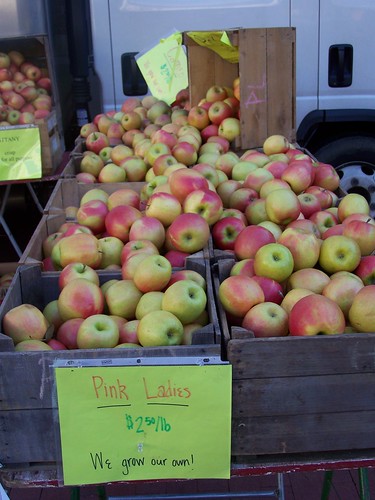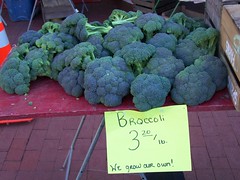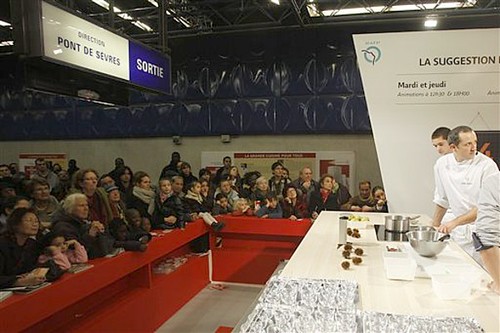
The
Post has an op-ed today, "
The fight over food," by two people writing a book about the initiative to change unhealthy eating and other behaviors in Huntington, West Virginia.
The basic point they make is that despite all the attention paid to the locavore and organic food movement and the fact that much of the food (such as "heritage turkeys" at $10/pound) is expensive, it doesn't have to be that expensive to eat more healthfully.
It happens that my first job in Washington was for the Center for Science in the Public Interest, an advocacy group concerned primarily with nutrition and safe food, as well as the health impact of the consumption of alcoholic beverages. The group doesn't address tobacco-related health issues, as there are plenty of other well-funded groups focusing on that issue area. I was interested in agricultural production related issues too, although CSPI didn't address that field, although in the 1970s, Jim Hightower's Agribusiness Accountability Project did.
Working at CSPI taught me a lot about nutrition (I read some books and interacted with the staff and developed publications for the organizations), direct marketing (the group is one of the more successful nonprofit publishers, relying on sales of subscriptions, "memberships," to Nutrition Action Healthletter), publishing, and advocacy, the process of social change, and legislation and regulatory related lobbying.
Working at CSPI interested me in public health and public health oriented approaches to behavior (epidemiology, social marketing, etc.) and probably stoked my continuing interest in nutrition and other food-related issues in a variety of ways including farmers and public markets.
The Post op-ed says that it's not all that expensive (at least in the U.S.) to eat more healthfully. Although I will say that farmers markets in the DC region tend to have relatively high prices compared to markets in other regions, even as close as Baltimore. Pricing at FreshFARM markets trends particularly high.
Broccoli and apples at Saturday's FreshFARM market in Silver Spring, Maryland -- priced too high for me. I'd go to a supermarket instead. I noticed organic apples at the Silver Spring co-op a few weeks ago priced at $1.29/pound.

They're right.
But the real issue is that most people don't know how to cook. That's why so many of us purchase prepared foods and eat in restaurants.
That was true for me for many many years. These days I do cook more, feeling more confident in my ability to produce a recipe, like the pumpkin pie for Thanksgiving pictured above, even if the end result is by no means gourmet or extremely pretty like the kind of plating you see on Top Chef or in a fine dining restaurant. (And hey, this recipe from the
New York Times is dynamite too, "
Herbed White Bean and Sausage Stew." And note that while my cornbread for Thanksgiving was fine, my mashed potatoes didn't quite measure up.)
This comes up a lot (not my cooking) with my tenure on the Eastern Market Community Advisory Committee, which passes as a board for DC's Eastern Market public market.
I keep making the point that all trends nationally with regard to food consumption favor increased purchase of prepared foods and meals consumed "out-of-home" and that if the fresh food vendors want to increase sales, they're going to have to teach more people how to cook. That is especially the case in DC because the kind of demographic influx the city is experiencing jibes with the out-of-home food consumption trends.
I have been mentioning the need for a demonstration kitchen at Eastern Market ever since I started participating on EMCAC in 2007....
The crowd watches Chef Andre Loutsch, right, cooking pastries in a Paris subway station, Wednesday, Nov.24, 2010. Renowned Paris chefs took to the platforms of the Miromesnil subway station in a three-day series of cooking demonstrations and samplings. With a different theme and chef for each segment, French commuters had the oppurtunity to learn how to make, and to taste, many dishes, such as poached hake fish, calamari risotto, and fruit-filled crepes. (AP Photo/Christophe Ena)
I guess in some respects it comes back to the idea of teaching "home economics" but with a healthy, nutrition and foodways oriented twist. And being sure to include information on how and where to buy food, preferably less expensively.
Labels: food-agriculture-markets, public health




![]()
![]()



0 Comments:
Post a Comment
<< Home